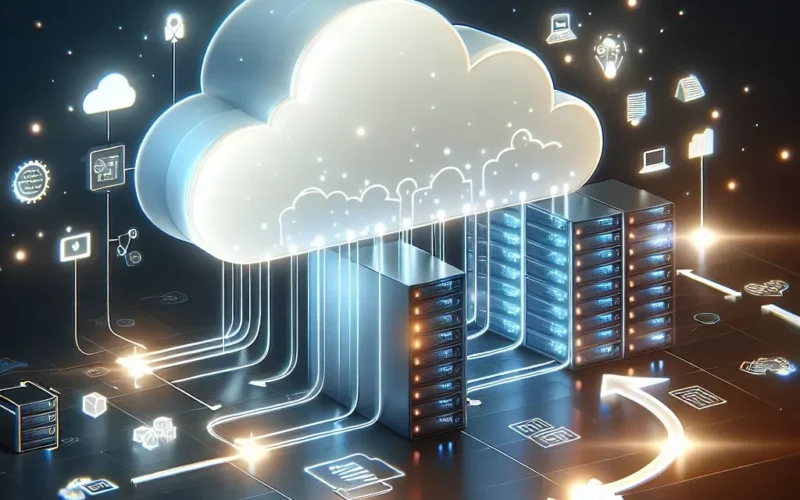Cloud computing has swiftly become a cornerstone for modern businesses, offering scalability, efficiency, and cost-effectiveness. However, migrating to the cloud is not a straightforward process; it requires careful planning, strategic execution, and an understanding of various migration approaches. This comprehensive guide will cover migration strategies to cloud computing, ensuring a smooth transition and unlocking the full potential of cloud services.
Planning Your Cloud Migration
The first step in any successful cloud migration strategy is meticulous planning. Without a well-defined plan, organizations risk facing disruptions, increased costs, and suboptimal performance.
1. Assess Readiness
Before proceeding, it’s critical to assess the organization’s readiness for cloud migration. This involves evaluating the current infrastructure, understanding the business requirements, and identifying potential roadblocks.
2. Define Objectives and KPIs
Clearly define the objectives of the migration, such as cost reduction, improved performance, or enhanced scalability. Establish Key Performance Indicators (KPIs) to measure the success of the migration.
3. Choose the Right Cloud Model
Select the appropriate cloud model based on your business needs. The primary models include:
- Public Cloud – Ideal for scalability and cost-efficiency.
- Private Cloud – Offers enhanced security and control.
- Hybrid Cloud – Combines public and private clouds for a balanced approach.
| Cloud Model | Pros | Cons |
|---|---|---|
| Public Cloud | Scalability, Cost-Effective | Less Control, Security Concerns |
| Private Cloud | Enhanced Security, Control | Higher Costs, Maintenance |
| Hybrid Cloud | Balanced Approach, Flexibility | Complexity, Cost Management |
Migration Strategies
Once the planning phase is complete, the next step is selecting an appropriate migration strategy. Different applications and workloads may require different approaches.
1. Rehosting (Lift and Shift)
Rehosting involves moving applications and workloads from on-premises infrastructure to the cloud with minimal changes. This approach is often quick and cost-effective but may not fully leverage cloud-native capabilities.
2. Replatforming
Also known as lift, tinker, and shift, replatforming involves making a few cloud-optimizations to achieve some benefits without changing the core architecture. It strikes a balance between rehosting and refactoring.
3. Refactoring
This strategy involves re-architecting and re-writing applications to take full advantage of cloud-native features, such as microservices and serverless computing. While resource-intensive, it offers significant long-term benefits.
4. Repurchasing
Repurchasing involves moving to a different product, typically a SaaS platform, instead of migrating existing applications. This can simplify processes and reduce costs but may involve significant re-training and adaptation.
5. Retiring
This strategy identifies and eliminates redundant or outdated applications, thereby reducing the migration scope and focusing on core applications that add value.
6. Retaining
Some applications may not be suitable for migration due to various constraints. In such cases, these applications are retained in their current form while others are migrated.
Best Practices for Cloud Migration
Implementing a cloud migration strategy involves a series of best practices to ensure a smooth and successful transition.
1. Develop a Comprehensive Migration Plan
An elaborate migration plan should include timelines, milestones, resource allocation, and a detailed risk management strategy.
2. Conduct a Pilot Migration
Begin with a pilot project to migrate a small, non-critical workload to the cloud. This allows for testing and validation of the migration process, thereby mitigating risks.
3. Leverage Automation
Utilize automation tools for tasks such as data transfer, resource provisioning, and monitoring to expedite the migration process and reduce human errors.
4. Monitor and Optimize
After the migration, continuously monitor the performance and costs of cloud services. Optimization can enhance performance and reduce expenses over time.
Key Challenges in Cloud Migration
Despite the numerous benefits, cloud migration comes with its own set of challenges that organizations should be prepared to address.
1. Data Security
Security concerns are paramount when moving sensitive data to the cloud. Implement robust encryption, access controls, and compliance measures to safeguard data.
2. Downtime and Disruption
Migration can cause downtime and service disruptions that may impact business operations. Plan for contingencies and minimize downtime by migrating during off-peak hours.
3. Cost Management
While cloud services can be cost-effective, improper management can lead to escalating costs. Implement cost monitoring and optimization strategies to manage expenses.
4. Technical Skills Gap
The shift to cloud computing may necessitate new skills and expertise. Invest in training and upskilling employees to ensure a proficient workforce.
Conclusion
Migrating to cloud computing is a multi-faceted process that demands careful planning, robust strategies, and vigilant execution. By following the migration strategies outlined in this guide, organizations can ensure a seamless transition, harness the full potential of cloud services, and achieve their business objectives. Whether opting for rehosting, replatforming, or refactoring, the key is to align the migration approach with business goals and continuously optimize for performance and cost-efficiency.






